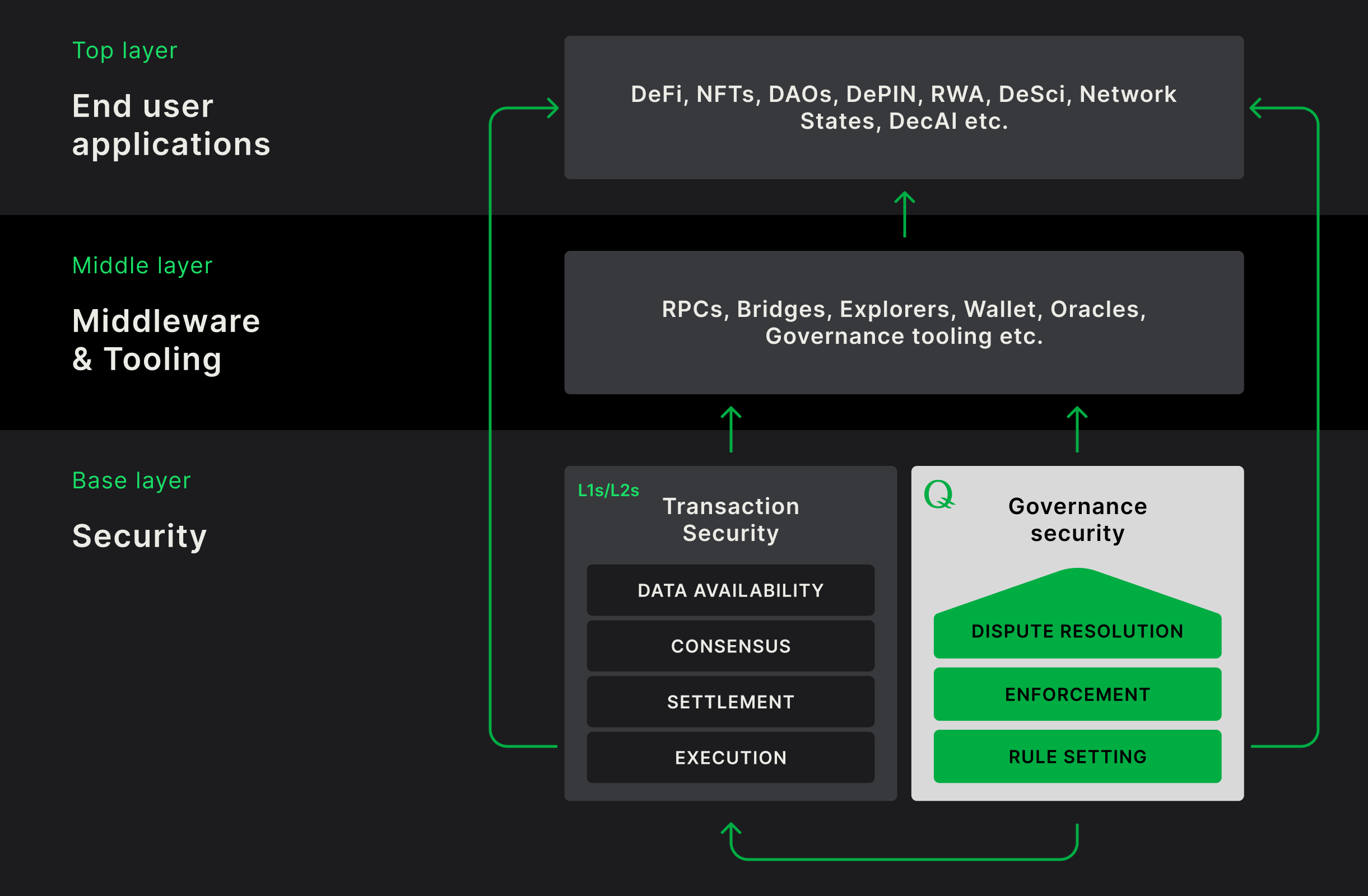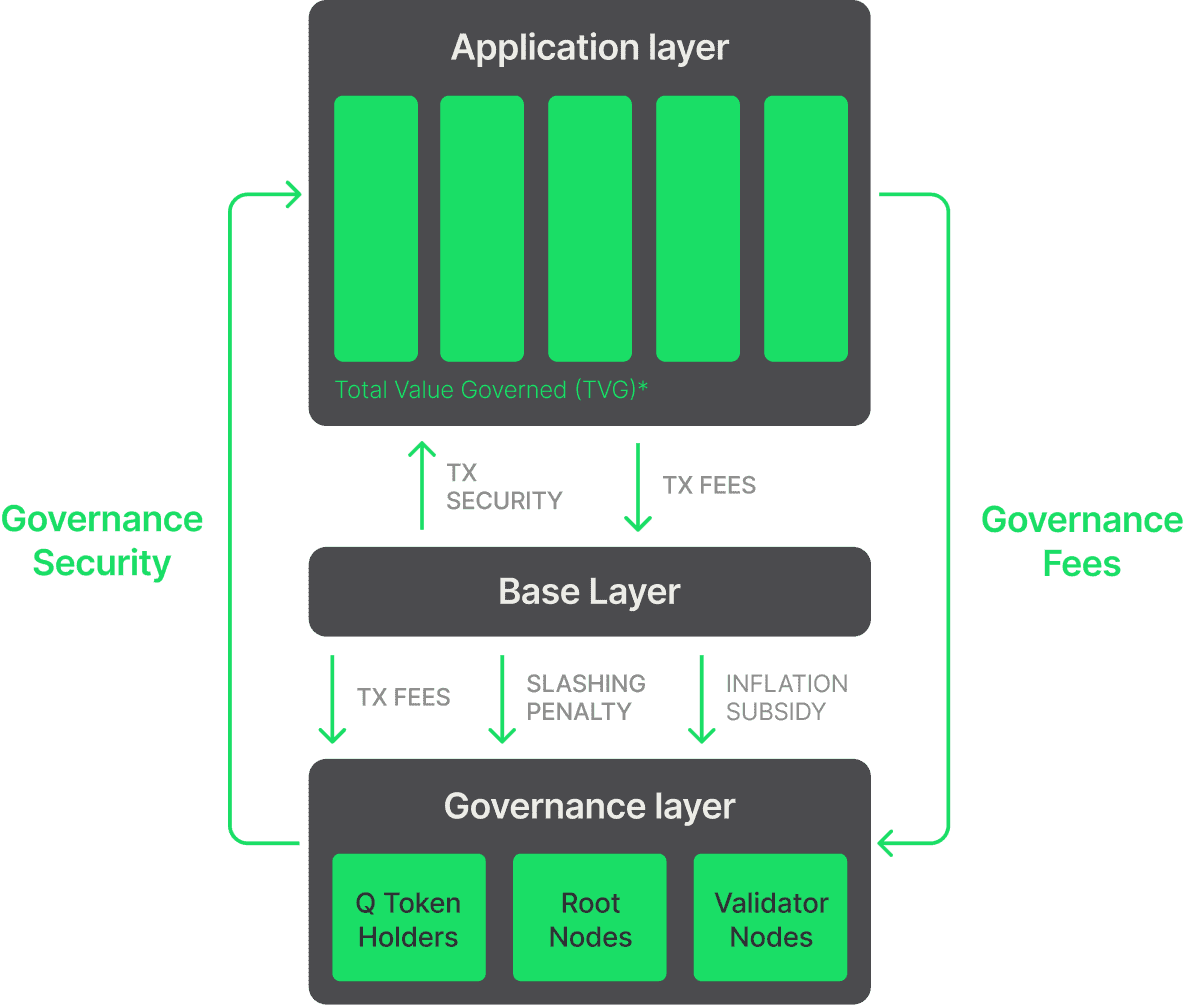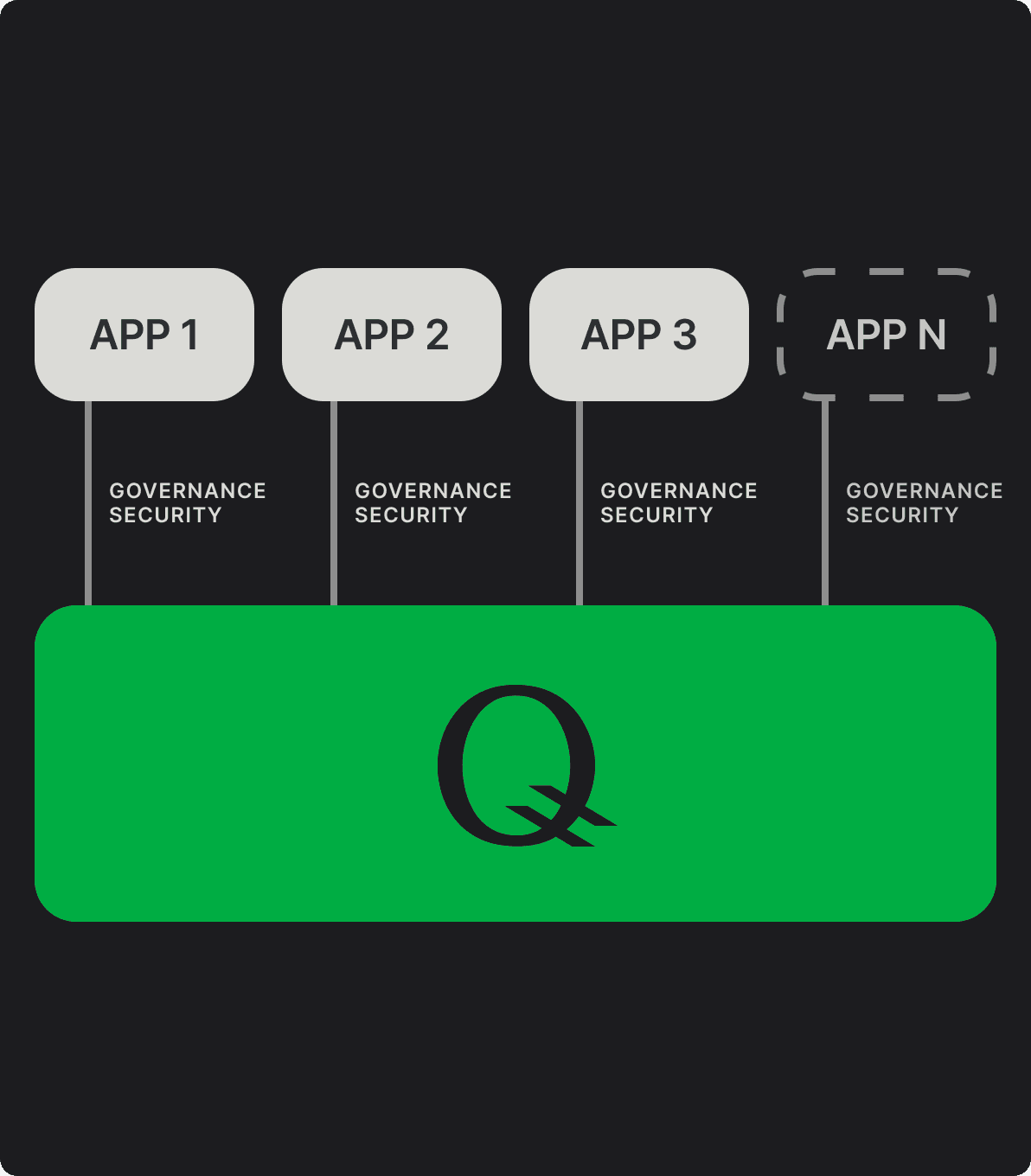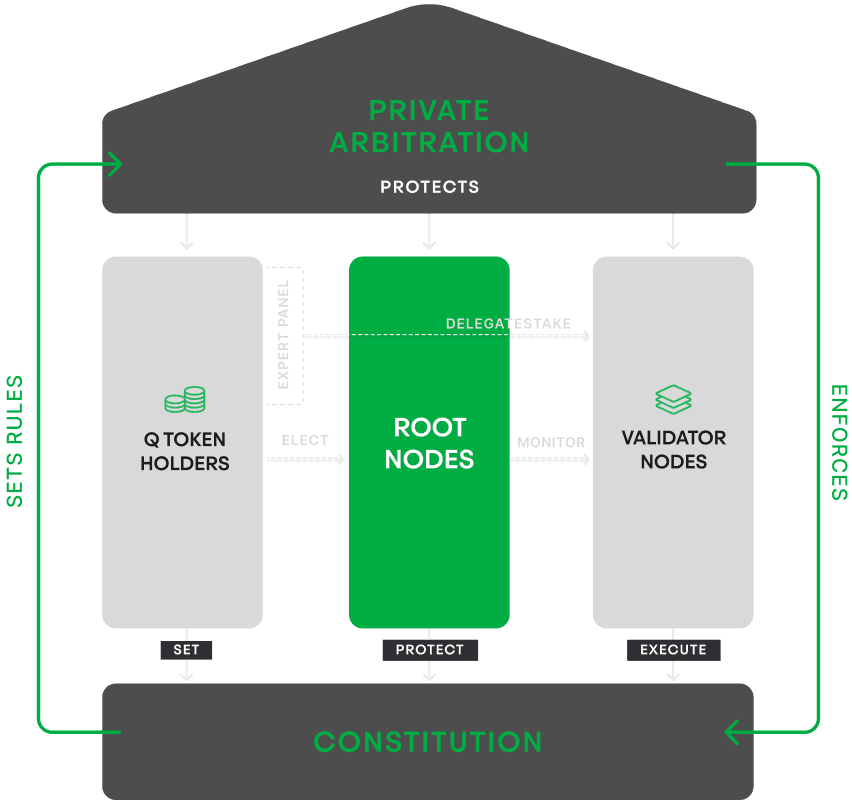About Q
What is Q?
Q is a decentralized governance layer for Web3. It establishes the concept of Shared Governance Security: A new key primitive in the modular blockchain stack. Applications and protocols can opt into Q’s governance infrastructure for an instant security upgrade. As a full-scope governance operating system, the Q Protocol solves some of crypto’s most pressing problems: It prevents governance exploits and reduces legal and regulatory risks associated with centralized decision making. Moreover, Q expands the scope of what is possible on-chain, enabling new and innovative business models to emerge in Web3. Built as a fully EVM-compatible Layer 1 for maximum security, the protocol is live with a full set of infra and applications supporting the ecosystem.

Why does governance matter?
Governance is the key to value creation. This has been proven time and again for companies, public goods and nation states. Those with the best governance systems are the ones that create the most value. Governance frameworks in Web3 today fail to address the real problem, focusing on tooling and simplistic token holder voting. This invites governance exploits, centralization and excessive regulation. To unlock the true value of Web3, we need governance that goes beyond code-is-law.

How can projects use Q’s opt-in governance features?
Standardized features
Easily adopt standardized governance features that cover common needs like smart contract upgrades and DAO treasury protection.
Customized integration
For unique governance needs, projects can draft custom proposals tailored to their specific requirements.
How do projects benefit from Q?
Enhanced Security
Leverage Q as external security anchor to protect what is valuable.
Cost & Effort Savings
Reduce overhead of maintaining complex governance setups. Free up resources to focus on core priorities.
Decentralization
Mitigate regulatory risk of dependence on centralized governance actors.
What are the Economics of Q?
Q sustains its economic ecosystem through its native QGOV token and fee model. In addition to transaction fees, Q stakeholders receive governance fees from protocols that opt into Q’s governance features. These fees reflect the value created on the application layer. Q’s competitive fee structure creates a sustainable economy. By linking value creation and security, Q aligns incentives to stabilize its economy over the long-term.
Fee Distribution Between QGOV Holders


Get started on Q
Want to participate in Q, launch a decentralized organization or just get straight into the docs? Find here all you need to know.

Q's Ecosystem
At the heart of Q lays The Chamber, our network of partners and builders.


